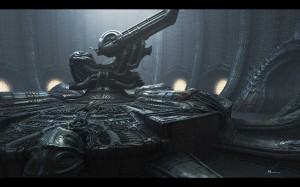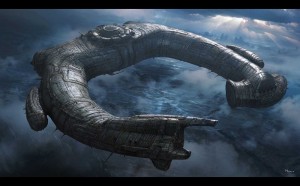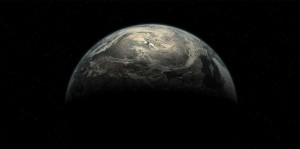
A veteran CINEMA 4D user, Messing served as visual effects art director under Prometheus production designer Arthur Max. He leveraged the 3-D animation software’s speed and intuitive processes to produce several physical set builds as well as CG environments, creatures, costumes and spaceship designs that contributed to the aesthetic and visual tone of the film. He also worked through postproduction creating matte shots and additional designs under VFX supervisor Richard Stammers and VFX producer Allen Maris.
Prometheus, directed by Alien and Blade Runner director, Ridley Scott, tells the mythological story of a team of explorers who journey through the universe on the spaceship Prometheus to investigate alien life forms. When the scientific team becomes stranded on an alien world, they struggle to survive, fighting a terrifying battle to save their own lives, and the future of the human race.

“Ridley was very proud of the original spaceship, (known as the Juggernaut), but he felt it looked primitive by today’s standards,” said Messing. “He wanted to convey a more believable level of scale and detail. He also asked us to give the pilot’s chamber set a facelift to include a finer degree of mechanical filigree, and create additional set pieces to support specific story points in the script.”
Messing produced roughly 200 unique images for the film including matte paintings, key-frame storyboards, set designs and visual effects paint-overs of final CG shots.
Messing spent weeks refining CG models that relied extensively on the UV texture displacement maps and intuitive MoGraph module in CINEMA 4D to create the new pilot’s chamber set. This included creating scale models of the center dais, desk console, sleeping pods and chamber walls. With fellow designer, Ben Procter, Messing also helped refine the pilot’s chair that rises from the center dais in the juggernaut.

“Final designs were then easily displaced and exported into scale-accurate hard geometry, which was delivered as very detailed model sheets for the set drafting and also to world-class visual effects studios including MPC in London and WETA in New Zealand for completion of the final digital set extensions.”
CINEMA 4D was also used in the opening shot of Prometheus that gives the audience a glimpse of what appears to be primordial Earth being revealed from shadow. “The planet layers were a combination of clouds, oceans, and continental land masses that all cast shadows as the sun rises, revealing the planet,” explained Messing. “I used CINEMA 4D’s global illumination engine and ray traced area shadows to achieve a realistic layered effect at an accurate scale.”
Messing also created a dozen very detailed and dramatic pinnacle formations that were painted over and layered together with atmospheric elements to create interesting compositions detailing the scope and grandeur of the alien planet’s landscape.
“MAXON continues to be astonished by Steven’s artistic vision and mastery of CINEMA 4D in imagining alternate universes,” said Paul Babb, MAXON US president/CEO. “Art direction defines the look and feel of a film production, so we could not be more pleased that our 3-D software played such a meaningful role in Ridley Scott’s highly anticipated Prometheus.”
Messing is currently providing VFX art direction on Gangster Squad and Oz: the Great and Powerful.





